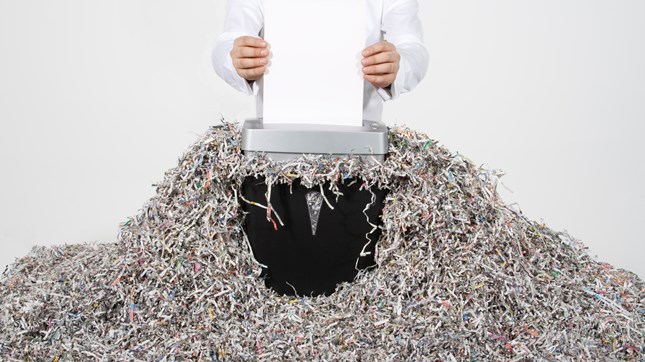Skill Builders
Article
When Illustrations Go Awry

Interesting things happen when interactive sermon illustrations go awry.
A recent interactive illustration came off the rails at the end of a message about the prodigals Jesus talked about in his parable about a loving, waiting father.
Spoiler alert: Both the younger and the older brother in the story fit the description of a prodigal. One was literally distant from the father. He was the obvious prodigal. The other lived in the same space with his father but was also distant. His bitterness and unforgiveness kept him far from true communion.
The big idea of this particular message is that we all become prodigals when we allow unforgiveness to develop distance between God and ourselves. That same unforgiveness also affects our earthly relationships. If we say we love God while we’re busy bad mouthing the person(s) who hurt us we’re definitely not basking in the light of truth.
Sticky Notes and Paper
How to drive home this point? I decided to build an analogy around the difference between sticky notes and paper that we shred. (Before you think that we tried to shred sticky notes, allow me to steer you clear of this notion. Even I had figured that the sticky part of those props wouldn’t end well.)
As I brought the message to what I hoped was a stirring conclusion I told the congregation that I tend to behave as though I write my hurts on sticky notes. I then place them in prominent places so I can easily remember how hurt I once was and how angry I still am at the blankety-blank so-and-so who hurt me.
I also told them that since God has graciously dumped upon me wheelbarrow loads of forgiveness—far more than I could ever repay—I should be able to let go of my human hurts and thus forgive those who have harmed me. That’s the theory anyway. In practice it’s really hard. I too often choose sticky notes over a shredder.
Cue the shredder.
I finished my buildup to the interactive part of this message and beckoned people to come forward with their hurts written on pieces of paper. I felt a lump in my throat as a long line of people formed to rid themselves of bitterness. I hoped that the next time they were tempted to grab a sticky note and return to the scene of their hurts they would instead recall the noise the shredder was about to make and then move forward with volitional intent toward freeing forgiveness.
That’s when things went south. I had provided some pre-cut pieces of paper upon which our eager forgivers would write their hurts (or the initials of those who had hurt them). The person who was supposed to hand out those papers at the entrance point had gotten distracted by someone with a pressing need so most people in the room hadn’t received those carefully sized pieces of paper.
Because our folks were extremely resourceful many of them tore tiny little pieces of paper from the corners of their “Sunday News” (bulletins).
The first person to approach the shredder resolutely stuck their little triangle of paper in the slot. Nothing. The paper was too small to trip the shredder sensor.
You know when you try really hard to shove your dollar bill into the vending machine and it keeps spitting it back at you as though your money isn’t good enough? That’s how we were feeling about our bitterness.
I took matters into my own pastoral hands and moved the shredder switch all the way to the right, thinking I had turned it to “always on.” That should do the trick, right? No need for sensors now. The gears were constantly moving.
But, nope.
A long line of people stood there patiently praying while the next person in line failed to get rid of their unforgiveness. No matter how hard they tried, that shredder was just not going to gobble up their painful memories. Gears were grinding but the bitterness remained.
In a final act of desperation I yanked the top off the shredder and instructed the people to just tear up their papers into tiny bits and thrown them into the bin. That finally worked.
Just after the embarrassingly long, awkwardly worshipful act of forced forgiveness was completed I discovered that I had moved the switch one notch too far to the right. The shredder had been set to reverse.
God Uses Illustrations that Go Astray
After our final heartfelt prayer and a stirring song I headed toward the door. Before I could take my place by the exit someone caught me by the elbow. He said, “That might just have been one of the best things that could have happened.”
“And how is that?” I asked.
“Seriously,” he could tell I was dubious, “the next time I try to go back to the hurt I am trying to get rid of I will definitely remember this event. What happened just now is exactly what happens when we try to let go of our unforgiveness. We want to let it go but it’s like we just can’t quite do it. Personally I think what just happened was actually more effective. From now on I won’t be able to think about the story about the prodigal sons and the waiting father without also thinking about that blasted shredder.”
I’ve come to realize that when sermon illustrations go awry interesting things really can happen.
And by the way, I think I’ve finally forgiven myself for fouling up the big finish to a sermon about forgiveness. God still turns feeble efforts into memorable messages.
Clark Cothern is pastor of Living Water Community Church in Ypsilanti, MI.









